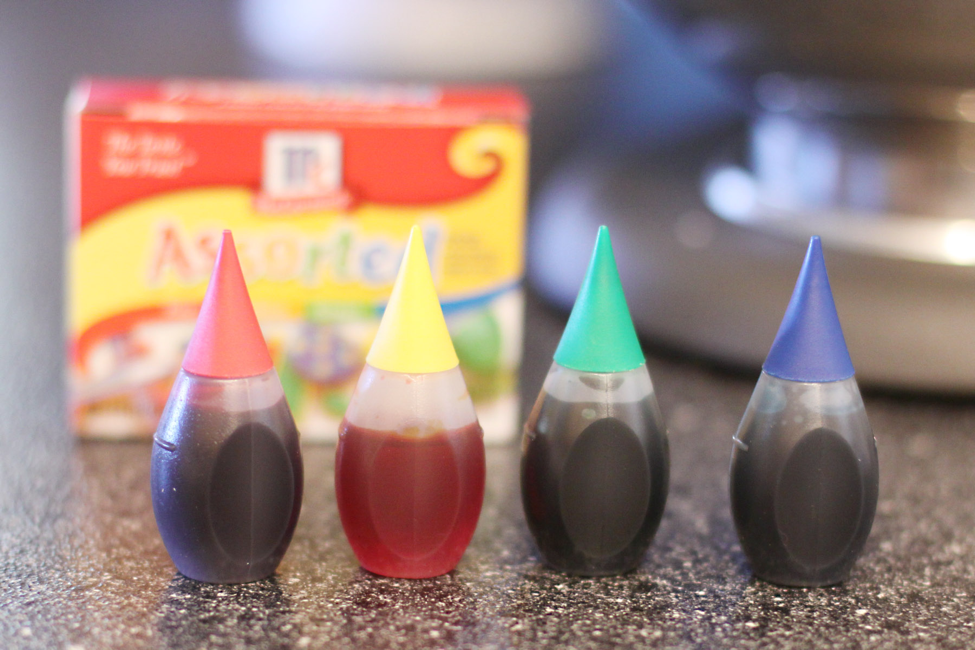People often take note of the foods they eat based on their nutritional value. For example, a health-conscious person might opt to have some yogurt as a snack instead of a handful of Swedish fish. However, the healthier option might share an unhealthy ingredient with junk food that most people wouldn’t think twice about. The ingredient in question is food coloring.
Food coloring has been around since Ancient Egypt, when candy makers added natural extracts and wine to improve their products’ appearance. With the advent of the Industrial Revolution, many people became dependent on foods produced by others at low costs; as a result, food factories turned to synthetic coloring additives (some of them created for textiles) to mix with their mass-produced goods. Modern consumers did not notice the dangers of synthetic food coloring until 1976, when Mars discontinued red M&Ms for a decade after finding that its Red 2 food coloring was directly linked to causing cancer.
Since 2010, several countries in Europe have banned artificial dyes and require foods using any still-approved unnatural colors to prominently display warning labels on packaging. Those labels are required to state that eating artificially colored foods might be linked to behavioral issues in children. American companies including Kellogg’s, Kraft, and McDonald’s have stopped using artificial dyes abroad but continue to sell foods with such questionable ingredients to the U.S. market.
According to the FDA in 2007, Americans were consuming five times more artificial food colorings than they were in 1955. As a result, there is an 11% average of children between the ages of 4 and 17 that have been diagnosed with ADHD/ADD in the U.S. while around 5% of Western European children have the disorder. Even though the brain disorder is still prevalent in Europe, American children tend to have it in spades due to the brand presence of food producers; Kellogg and Kraft have household recognition throughout the states whereas in Europe, they have little selling power.

Two major food colorings: Yellow 5 and Red 40. The latter is the most popular food dye in the world, used in cosmetics and drugs along with foods.
Let’s look at two of the most popular food colorings: Yellow 5 and Red 40. Yellow 5 is based in both coal tar and a crude oil runoff containing benzene. This food dye is known to cause hyperactivity in children, severe allergic reactions to those sensitive to aspirin, and a possible predisposition towards asthma. Red 40 comes from petroleum distillates, containing assorted metals such as aluminum and cochineal beetles. Children are especially sensitive to Red 40 and have exhibited temper tantrums, jitteriness, uncontrollable crying, and ADHD.
All in all, it boils down to food companies trying to save a buck or two. People expect their food to have an appropriate color, but they don’t expect that color to have negative long-term side effects. Think twice when buying your children certain sweets: too little of them and they might be jumping up on the walls; too much of them and they might adversely affect their brains.
Sources:
Daily, Alternative. “The Top 5 Worst Artificial Colors.” Alternative Daily, 28 Apr. 2013, www.thealternativedaily.com/top-5-worst-artificial-colors/.
Decker, Ray, and Naomi Richfield-Fratz. “Color Additives: FDA’s Regulatory Process and Historical Perspectives.” U S Food and Drug Administration Home Page, Center for Food Safety and Applied Nutrition, 12 Oct. 2003, www.fda.gov/forindustry/coloradditives/regulatoryprocesshistoricalperspectives/.
Ettinger, Jill. “Banned in Europe, Food Coloring Linked to Behavior Problems.” Organic Authority, 3 Mar. 2014, www.organicauthority.com/blog/organic/banned-in-europe-food-coloring-linked-to-behavior-problems/.
Kim, Susanna. “11 Food Ingredients Banned Outside the U.S. That We Eat.” ABC News, ABC News Network, 26 June 2013, abcnews.go.com/Lifestyle/Food/11-foods-banned-us/story?id=19457237#1.
Melina, Remy. “Why Were Red M&M’s Discontinued for a Decade?” LiveScience, Purch, 10 Feb. 2011, www.livescience.com/33017-why-were-red-mms-discontinued-for-a-decade.html.

